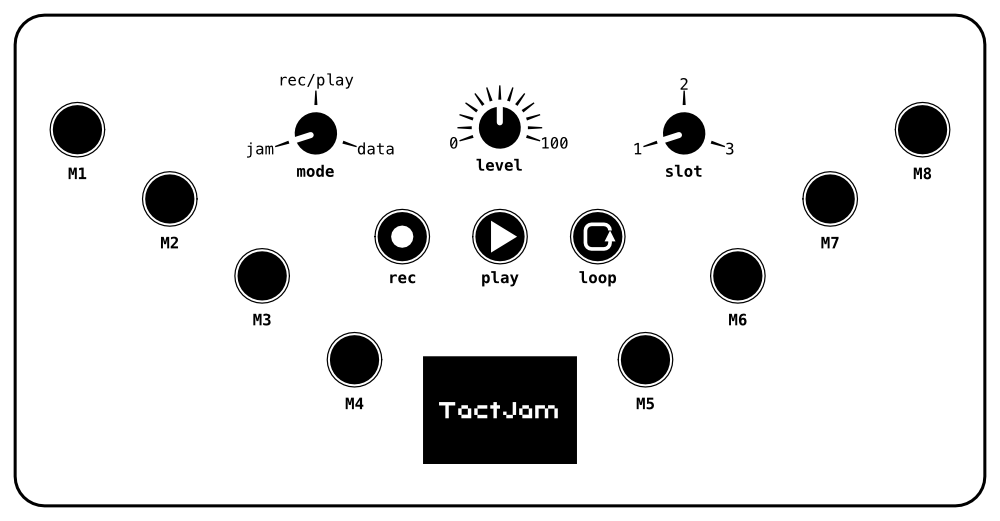TactJam

Tool Summary
| Metadata | |
|---|---|
| Release Yearⓘ The year a tool was first publicly released or discussed in an academic paper. | 2021 |
| Platformⓘ The OS or software framework needed to run the tool. | Electron |
| Availabilityⓘ If the tool can be obtained by the public. | Available |
| Licenseⓘ Tye type of license applied to the tool. | Open Source (MIT, CC-BY-4.0) |
| Venueⓘ The venue(s) for publications. | ACM TEI |
| Intended Use Caseⓘ The primary purposes for which the tool was developed. | Collaboration, Prototyping |
| Hardware Information | |
|---|---|
| Categoryⓘ The general types of haptic output devices controlled by the tool. | Vibrotactile |
| Abstractionⓘ How broad the type of hardware support is for a tool.
| Bespoke |
| Device Namesⓘ The hardware supported by the tool. This may be incomplete. | TactJam Hardware |
| Device Templateⓘ Whether support can be easily extended to new types of devices. | No |
| Body Positionⓘ Parts of the body where stimuli are felt, if the tool explicitly shows this. | Head, Arm, Hand, Torso, Leg, Foot |
| Interaction Information | |
|---|---|
| Driving Featureⓘ If haptic content is controlled over time, by other actions, or both. | Time |
| Effect Localizationⓘ How the desired location of stimuli is mapped to the device.
| Location-aware |
| Non-Haptic Mediaⓘ Support for non-haptic media in the workspace, even if just to aid in manual synchronization. | None |
| Iterative Playbackⓘ If haptic effects can be played back from the tool to aid in the design process. | Yes |
| Design Approachesⓘ Broadly, the methods available to create a desired effect.
| Direct, Library |
| UI Metaphorsⓘ Common UI metaphors that define how a user interacts with a tool.
| Demonstration |
| Storageⓘ How data is stored for import/export or internally to the software. | Internal |
| Connectivityⓘ How the tool can be extended to support new data, devices, and software. | None |
Additional Information
TactJam consists of a hardware component, client software component, and server component. The hardware includes eight ERM motors each connected to a board with push buttons corresponding to each. In the client, users can create effects by arranging dots representing the motors on a 3D model of a human. With the hardware connected over USB, patterns can be recorded into the client as they are played on the device itself. When a pattern is ready, a user can upload it to the TactJam server so that others may download and reuse it.
For more information about TactJam, consult the TEI’21 abstract, the TEI’22 paper, and the main GitHub repository.